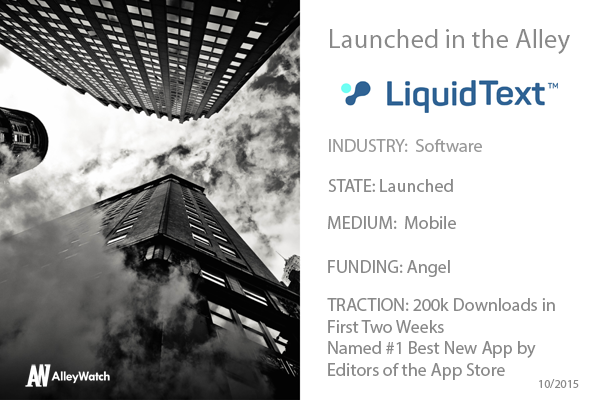Reading is necessary. We have been pretty good with dealing with the annoying aspects of it, but at this point we have no alternatives. We have learned to flip between pages quickly, dog-earing pages we want to go back to, or even highlighting passages you need for writing a paper. But for this century this is far too much work. LiquidText gives us a solution for these nuisances. With their new technology, they have made reading to understand a ton easier for any age group. With the ability to search smarter, highlight and drag, and create an outline side by side with your document, this is the fastest and smartest way to read.
CEO Craig Tashman, tells us how his software works, as well as how he is going to change reading forever. So throw away your printer and read on!
Tell us about your product or service: In the big picture, LiquidText gives people better tools for understanding, organizing, and making connections in the things we have to read for work and school. Today, reading-to-understand (known as “active reading”) means grabbing a highlighter and a printout; the process is awkward tedium that we all face whether we’re shopping for a laptop, preparing for a trial, or studying for a test. Things like comparing pages, staying aware of what’s important, finding the context, and connecting different ideas together are almost painful. LiquidText changes that. We give people a radically new way to interact with text that’s like Minority Report for reading, built on four years of peer-reviewed research, that makes active-reading productive and even enjoyable. We’ve just released our first product, our iPad document reader app. But as we expand our offering across devices, we’re aiming to transform reading universally, directly taking on the current reading media, from Word to Acrobat, as well paper itself.
How is it different: Digital reading software has generally tried to replicate and build on the way we read with paper. But the problem is that a paper printout with a pen and a highlighter is actually a poor set of tools for active reading to start with. And when we try to copy it on a computer, we tend to inherit the worst parts of paper (its representational inflexibility), while leaving behind the things that make it tolerable (its physicality spatial presence). LiquidText is different; we don’t try to copy paper. We built LiquidText based on how people read and what they need to do so. We created new metaphors, new interaction models, and new touch gestures to make it possible.

What market are you attacking and how big is it: We’re going after the professional market to begin with. We’ve seen huge interest in the legal and financial spaces, but also more broadly among knowledge work professionals of all kinds.
What is the business model: We’re planning to offer LiquidText as a freemium subscription service, with mobile and desktop clients and cloud content storage and sharing included. We plan to launch this more complete vision next year.
Milestones in the next 6 months: We first want to release support for working with multiple documents at once—we hope to offer some clever features there that our users will very much enjoy. After that, we want to build out the rest of the platform—an OSX and Windows client, and the web back end to connect the pieces together. We love our app, but it’s just the tip of the iceberg.
What’s the one piece of startup advice that you never received: The importance of building the right advisory network vey early in the process. I assembled a strong advisory board in the beginning and largely left it at that, which was a mistake. It’s very hard to get the necessary diversity of experience and expertise in 5 or 6 people to inform the early growth of a startup. In more recent years, I’ve found it critical to deepen my network of CMOs, engineers, designers, and especially other founders.
If you could be put in touch with one investor in the New York community who would it be: Probably Alexis Ohanian; he has an obvious passion for content and expanding the world’s knowledge. And as an early investor in Evernote, I think he’d like what we’re up to.
Why did you launch in NY: I’m a New York native; born in the Bronx; I love this neighborhood and want to contribute to it. Besides that, many of the companies we’re discussing partnerships with are based in this area.
Favorite place to visit in the area in the fall: I was raised in northern Westchester, and I love that area. It’s great to walk around by the Hudson River up by Croton Point, but really the entire area is so lush with trees that the colors become incredible once the leaves start to change.




